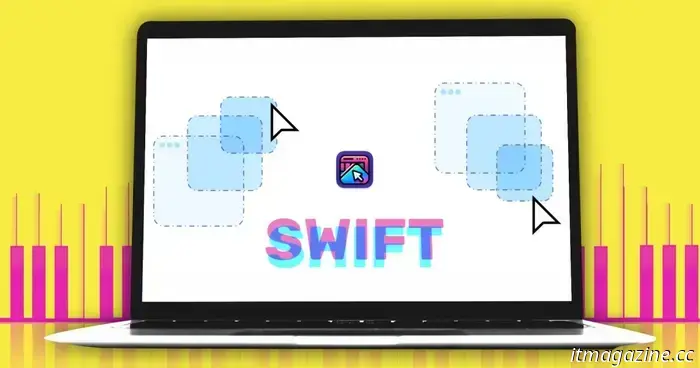
How to determine the actual cost of your mobile bill across all major carriers.
It remains largely unclear how potential increases in tariffs will influence the cost of future smartphones. Will companies such as Apple transfer the anticipated rising production costs to consumers, or will they absorb those costs? Is there a chance that President Donald J. Trump will reconsider and avoid implementing new tariffs?
One element that remains certain is that the overall cost of a smartphone, whether it’s an iPhone 16e or a Galaxy S25, entails more than just the device's price. Monthly service fees, taxes, and additional charges also contribute to the total expense.
So, what is the actual cost of a smartphone in the U.S.? Let’s examine it.
The device payment (or opportunity cost)
For a significant number of Americans, the most apparent monthly expense comes from the installment plans provided by carriers or retailers. Premium smartphones frequently surpass $1,000, leading to considerable monthly payments over periods of 24 to 36 months.
For example: A phone costing $1,200, financed over 24 months, would result in a monthly payment of $50 (not accounting for interest or extra fees).
However, even if you buy your phone outright, there's an opportunity cost to consider. That sum could have been invested or utilized for other needs. Although it’s not a direct monthly outlay, it factors into the overall financial picture. Additionally, the gradual depreciation of the device signifies a loss of value over time.
The essential service plan
Without a service plan, a smartphone is virtually ineffective. Major carriers like Verizon, AT&T, and T-Mobile, in addition to smaller Mobile Virtual Network Operators (MVNOs), offer these plans, which significantly influence monthly expenses.
Individual Plans: Basic individual plans with limited data typically range from $30 to $50 per month. Unlimited data plans usually cost from $60 to $90 or more, based on the carrier, features (such as hotspot data or international calling), and any applicable taxes and fees.
Family Plans: Although they provide better value per line, they accumulate to a notable monthly expense for households. For instance, a family of four with unlimited plans might spend anywhere from $150 to $250 or even more each month.
It is crucial to carefully review the specifics of your service plan, including data limits, data throttling policies, and any additional costs for exceeding those limits.
The hidden costs: taxes and fees
The stated price of your service plan seldom reflects the final monthly bill. Federal, state, and local taxes, along with carrier-specific fees (like administrative costs or regulatory recovery fees), can add a significant percentage to your monthly expense, varying considerably by location.
For example: A $60 advertised plan could easily rise to $70 or above once taxes and fees are included.
The necessity of insurance or a protection plan
Smartphones are delicate and can be costly to repair. Many users opt for insurance or protection plans offered by carriers, manufacturers, or third-party providers to safeguard against accidental damage, loss, or theft. These plans normally include a monthly premium.
For example: Protection plans can range from $8 to $15 or more monthly, adding to your recurring expenses.
The inevitable accessories
While not strictly necessary for basic functions, a majority of smartphone users buy accessories that increase the overall ownership cost.
Phone cases and screen protectors: Often regarded as essential for device protection, these can cost between $10 and $50 or more up front. Although they do not represent a recurring monthly expense, their importance should be recognized.
Chargers and cables: It’s common to lose or need extra chargers for various locations, which can add a few dollars to your monthly spending over time.
Headphones or earbuds: Whether wired or wireless, these accessories enhance the smartphone experience and incur additional costs.
The subscription ecosystem
Smartphones serve as gateways to a plethora of subscription services that boost their functionality and entertainment value. Many users subscribe to several of these services, contributing to the monthly bill.
Streaming services: Subscriptions to Netflix, Hulu, Disney+, Spotify, Apple Music, etc., can collectively cost $30-$60 or more monthly.
Cloud storage: Subscriptions like iCloud, Google One, and Dropbox for backing up photos and files are often necessary as storage needs increase.
Gaming subscriptions: Services like Apple Arcade or Google Play Pass incur a monthly fee for access to a portfolio of games.
Other apps: Productivity applications, fitness trackers, and news outlets may also require monthly subscriptions.
Calculating the true monthly cost
To gain a better understanding of your actual monthly cost, consider the following steps:
Divide the total cost of your phone (if purchased outright) by its anticipated lifespan in months. Although subjective, a reasonable lifespan is often thought to be two or three years (24-36 months). If you’re on a payment plan, that amount represents your direct device cost.
Add the cost of your monthly service plan, including all taxes and fees. Scrutinize your bill to pinpoint these extra charges.
Include the monthly cost of any



Other articles
 Apple may divide the launch of the iPhone 18 series to highlight its foldable device.
According to reports, Apple intends to delay the launch of the entry-level iPhone 18 model until Spring 2027, allowing more room for its foldable phone to be released next year.
Apple may divide the launch of the iPhone 18 series to highlight its foldable device.
According to reports, Apple intends to delay the launch of the entry-level iPhone 18 model until Spring 2027, allowing more room for its foldable phone to be released next year.
 Enjoying Thunderbolts*? Here are three films featuring Florence Pugh that you shouldn't miss.
Florence Pugh has already established herself as a film star, but here are three of her lesser-known films.
Enjoying Thunderbolts*? Here are three films featuring Florence Pugh that you shouldn't miss.
Florence Pugh has already established herself as a film star, but here are three of her lesser-known films.
 I find window management in macOS frustrating. This free app provided the solution I was looking for.
When it comes to resizing and relocating app windows, macOS still has much room for improvement. Swift Shift provides a smooth and effortless solution to these issues at no cost.
I find window management in macOS frustrating. This free app provided the solution I was looking for.
When it comes to resizing and relocating app windows, macOS still has much room for improvement. Swift Shift provides a smooth and effortless solution to these issues at no cost.
 Four characteristics that Gemini and ChatGPT could benefit from adopting from one another.
Gemini Advanced and ChatGPT are both robust tools, yet they each have missing important features. Here are four crucial enhancements they could adopt from one another.
Four characteristics that Gemini and ChatGPT could benefit from adopting from one another.
Gemini Advanced and ChatGPT are both robust tools, yet they each have missing important features. Here are four crucial enhancements they could adopt from one another.
 Telegram has added group calls and business account automation
Telegram has introduced an update: now the messenger supports secure group calls for up to 200 people, allows you to connect AI bots to business accounts and appeal against profile freezing directly in the application. In addition, there are new gestures and advanced gift settings. All functions are already available to users.
Telegram has added group calls and business account automation
Telegram has introduced an update: now the messenger supports secure group calls for up to 200 people, allows you to connect AI bots to business accounts and appeal against profile freezing directly in the application. In addition, there are new gestures and advanced gift settings. All functions are already available to users.
 A ranking of every Pokémon starter.
The initial choice you face in every Pokémon game could be the most crucial: which starter will you select? Following nine generations, we have evaluated and ranked all the available options from least to most favorable.
A ranking of every Pokémon starter.
The initial choice you face in every Pokémon game could be the most crucial: which starter will you select? Following nine generations, we have evaluated and ranked all the available options from least to most favorable.
How to determine the actual cost of your mobile bill across all major carriers.
Uncover the true expenses of your mobile bill, including service plans and subscriptions. Find out how to manage and reduce your costs starting today!
